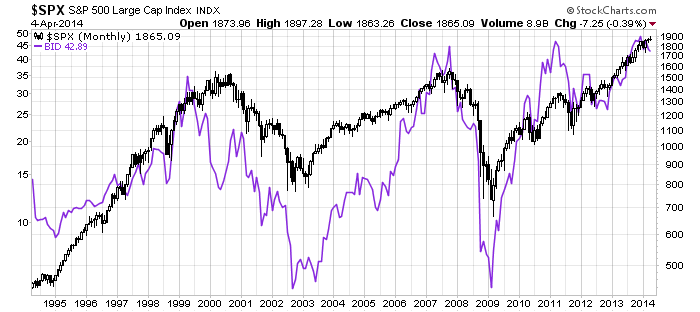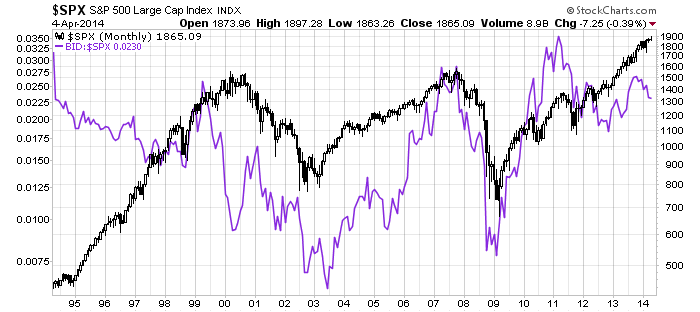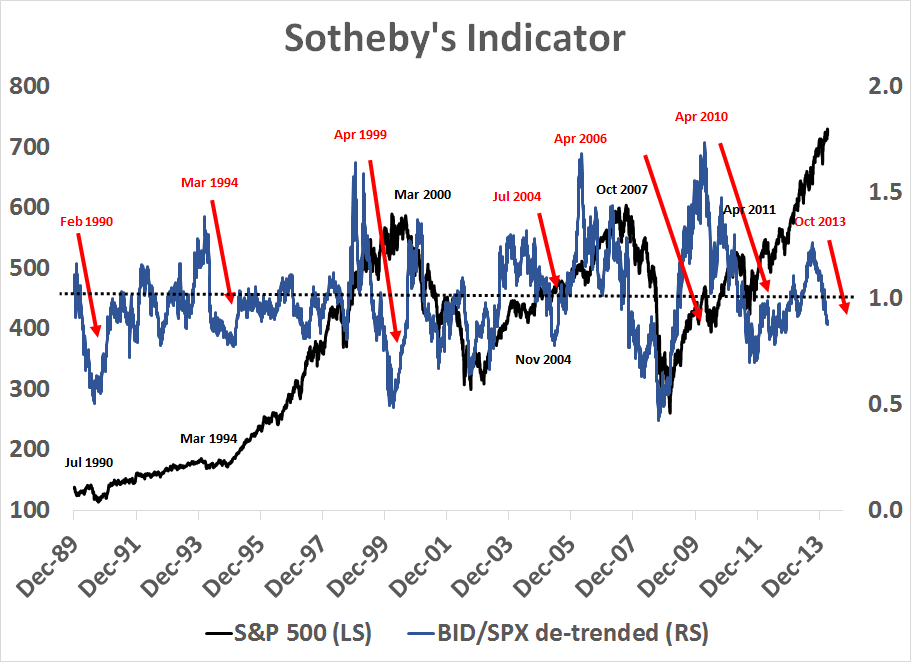Last week, hedge fund manager Jim Chanos appeared on CNBC and pointed to the price action of Sotheby's as a warning of an overheated market (emphasis added):
Closely watched hedge fund manager Jim Chanos says he has the best barometer for gauging where 1 percenters are putting their money, given the Federal Reserve's easy money policies that have been fueling their portfolios to record highs. During an interview Thursday on CNBC's "Squawk Box," he pointed to the stock chart of Sotheby's.
"That's what people are buying," Chanos said.
The chart shows that shares of Sotheby's have peaked before every major financial bubble since 1987, starting with the leveraged-buyout spree that fueled the stock market before the Black Monday crash that year.



In the chart, the dates of the BID/SPX ratio peaks are shown in red while the dates of the subsequent SPX peaks are shown in black. Peaks in the de-trended BID/SPX ratio led the actual market peak by between 0 months (1990) to 11 months (2000).
What about Chano's warning on CNBC last week?
My modified Sotheby's Indicator peaked out in October 2013, though the highs it reached were not as high as levels seen in previous significant market peaks. However, the chart shows that this indicator is not very useful as a tactical timing model as the lags between the peaks in the Sotheby's Indicator are uncertain. Nevertheless, it does provide a warning of the investment environment.
Disclosure: Cam Hui is a portfolio manager at Qwest Investment Fund Management Ltd. (“Qwest”). The opinions and any recommendations expressed in the blog are those of the author and do not reflect the opinions and recommendations of Qwest. Qwest reviews Mr. Hui’s blog to ensure it is connected with Mr. Hui’s obligation to deal fairly, honestly and in good faith with the blog’s readers.”
None of the information or opinions expressed in this blog constitutes a solicitation for the purchase or sale of any security or other instrument. Nothing in this blog constitutes investment advice and any recommendations that may be contained herein have not been based upon a consideration of the investment objectives, financial situation or particular needs of any specific recipient. Any purchase or sale activity in any securities or other instrument should be based upon your own analysis and conclusions. Past performance is not indicative of future results. Either Qwest or I may hold or control long or short positions in the securities or instruments mentioned.

